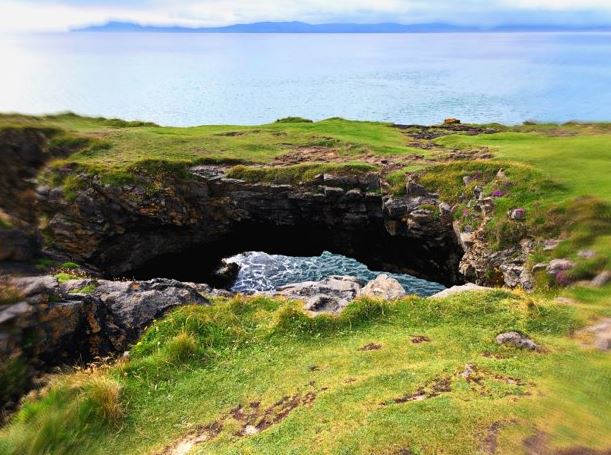STEM Photography 'Under 21s'
Please take a moment to scroll through the top-entries of our 'Under 21's' category of the STEM Photography Competition 2021:
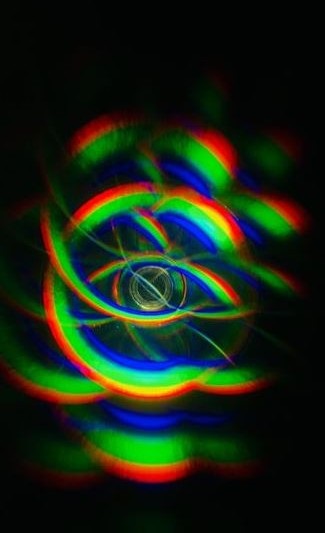
This is a photo I took of the back of a CD using a pair of diffraction sunglasses placed in front of the camera to create this effect.
Click 'Read more' for original image.
As the light from the flash of the camera starts and travels through the diffraction glasses, the glasses have a thin grating of parallel lines within the screen that diffracts the light from the flash creating a spectrum or rainbow of colour. This diffraction is caused by the light passing through these lines which causes them to be offset in their direction, this means that the white light is separated further and further into its spectrum as it travels.
This spectrum is then able to travel onto the disc. On the disc the light is refracted through an interference pattern, this allows for some colours to be made brighter as they converge upon each other and some to become darker and even disappear as they cancel each other out. The light is then reflected back towards the camera and the screen once more.
At this point the light has been diffracted, refracted and reflected; the light however still needs to travel back to the camera which causes the light to be diffracted even further, causing even further diversion between the colours of the new formed spectrum coming from the disc as it travels back through the diffraction screen.
The combination of all of these creates an image that really shows the extent to which light can be manipulated with very little in its way.
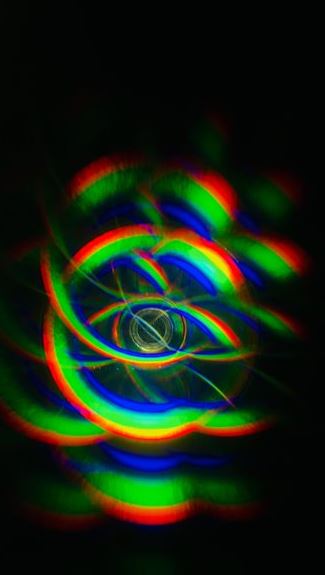
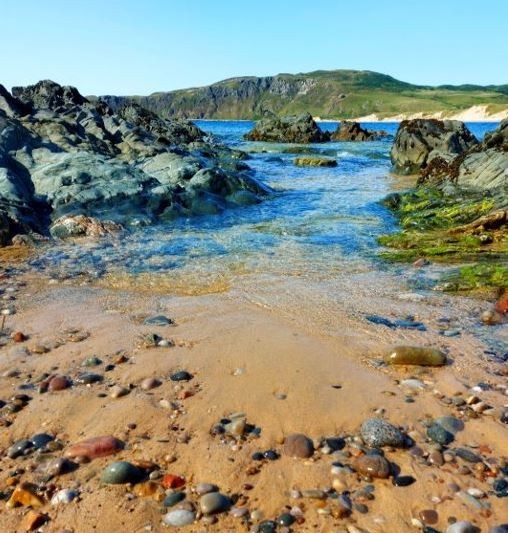
Rocky Beaches! You may be used to only seeing sandy beaches but what about beaches that mainly consist of Large boulders to rocks to the tiniest stones…
Click 'read more' to view original image
These would be known as Rocky beaches or more formally known as: Rocky Shores. These types of beaches or shores can be found on coastlines of most countries or in particular…islands.
Most Rocky Shores like this image show how intertidal solid rock predominates. This photo contains rock boulders, stones and SAND! Sand is present in that location due to rocks getting carried away by the energetic flow of water waves, currents and wind which then with tremendous force result in the weathering and eroding of rocks over millions of years, hence forming this granular material.
These types of shores have always been very accessible areas which is why they have been studied very thoroughly over the years; from the intertidal ecosystems, tide pools, corals, seaweed and seabird species as well as the habitats on land. Rocky shores are biologically rich environments with different marine species. The only threats these beautiful nature landscapes face are… pollution and marine litter! Taking care of such valuable places requires respect for nature and the environment. As well as taking care of beaches, going to rocky shores usually requires looking after yourself as rocks may be slippery from water or algae and not be stable. Nevertheless... Enjoy the scenery!

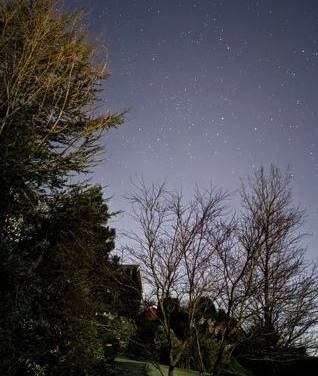
Typically what makes a great astro-photograph is a camera's hardware, being the quality of it's sensor, lens and a star tracking camera mount.
Click 'read more' to view original image.
However, this photograph is very different, in that I am only using my phone (pixel 4a), and a very cheap tripod. The hardware is mediocre at best, but the software behind it is much more powerful. How it works is that my phone takes many short exposure shots, about 15 seconds each, in order to prevent the stars from "trailing". Then it needs to overlay them to create one clean image.
However it's not that simple, and AI is key to pulling it off. By using machine learning, AI nails the important parts: differentiate the sky from the subject, to process it separately; it ensures all shots are lined up, as the sky moves between exposures; and once that's finished, any "hot" pixels, which would ruin the image, need to be identified and removed. But AI manages it all in 3 seamless minutes, and is also able to perfect the exposure too. Although it's true you are looking at a breathtaking view of our seemingly endless universe, this photo also demonstrates the seemingly endless innovation of modern technology, and what true marvels can be achieved with a strong STEM mindset.
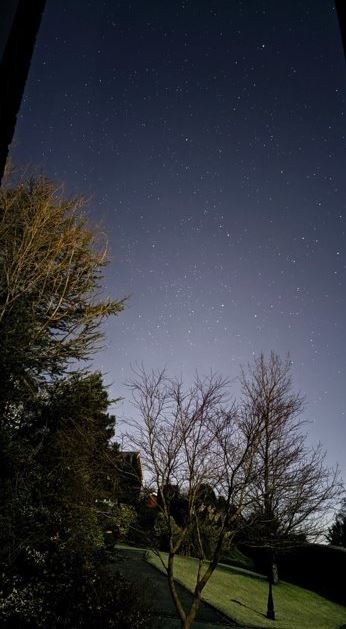

Dublin Docks: the underrated lifeblood of Ireland. Waiting for my ferry, I watch them come alive, containers rising with the sun. The process is a slow one, as each crane reaches down to grab its cargo and raise it to the sky.
Click 'read more' to view original image.
The engineering holds strong, and the crane continues its work. Until slowly, a little to the left and a little to the right, the load slots with perfect precision deep into the belly of the ship. Then it’s off around the world.
But so what? We’ve been trading for millennia, tracking caravans on Silk Road. STEM didn’t exist then, so why is it important now? Well here’s the thing; science, technology, engineering and maths - they didn’t just begin with STEM. They’ve been used since time began, when cavemen sharpened rocks to invent knives and travellers charted the stars to guide them. And that foundation has been built upon by the greatest minds of each generation, to allow me to capture this photo. It shows a world where STEM has globalised the world, built economies and flourished civilisations through trade. Without the innovating minds of STEM professionals, this would simply not exist: journeys would be long and ships lost at sea. Trade would be small-scale and inefficient. I cannot begin to understand how the Docks work; but I can certainly appreciate the genius involved, as I submit this photo of Ireland, on a phone made in China.
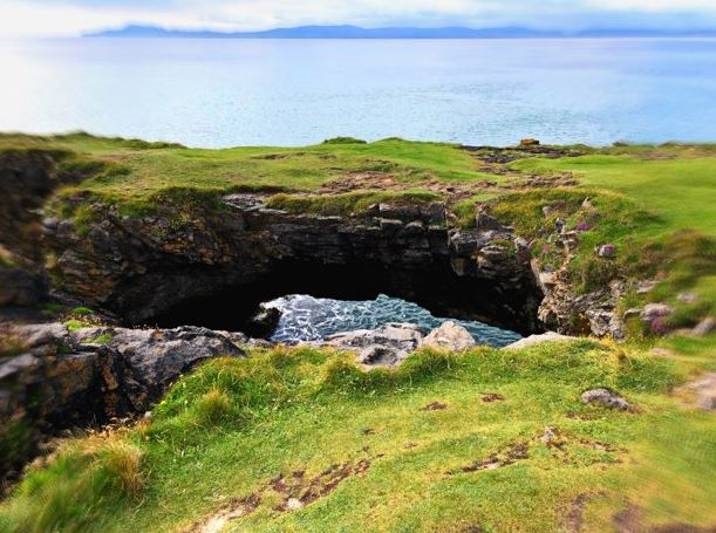
I believe lockdown instilled an appreciation for attractions closer to home in all of us. In this particular instance, I’m referring to the ‘Fairy Bridge’ in Bundoran.
I was fortunate enough to visit on a sunny day which allowed me to properly capture the landmark, as well as the sun reflecting off the sea below. As with many natural formations, locals in the 1700s attributed its strange shape and location to be the work of the fairies. Nowadays, we know that the bridge structure is a result of sea stacks, which are hundreds of years old. Still, there is something magical to be said about how the ocean beneath it looks in the summer sunlight.
A sea stack is a geological landform formed by wave erosion. Over time, a headland (a point of land usually high and often with a sheer drop, that extends into a body of water) is eroded by the hydraulic action of the waves crashing against the rock, causing it to collapse. Sea stacks can be found all over the country, but the unique bridge shape of the ‘Fairy Bridge’ has made it a popular tourist attraction since the 1800s. The ‘sun glitter’ on the ocean is a result of sunlight reflecting off the waves. Light reflects from smooth surfaces by specular reflection. A rippled but locally smooth surface such as water with waves will reflect the sun at different angles at each point on the surface of the waves.
